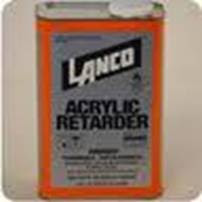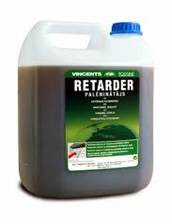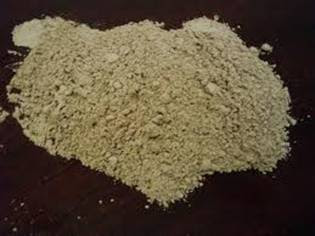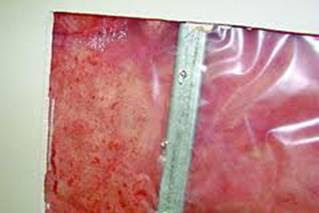In todays modern world concrete is used for a varieties of purposes and to make it suitable for all the conditions the properties of ordinary concrete becomes insignificant. In such cases certain chemicals are used to modify or improve the properties of ordinary concrete. These chemicals are called as Admixtures. So in simple terms an admixture is defined as –
“a material, other than cement, water and aggregates, that is used as an ingredient of concrete and is added to the batch before or during mixing.”
Admixtures are broadly classified as:
· Plasticizers
· Superplasticizers
· Retarders
· Accelerators
· Air-entraining admixtures
· Pozzolanic
· Damp-proofing and waterproofing admixtures
· Gas forming admixtures
· Air-detraining
· Alkali- aggregate expansion inhibiting
· Workability admixtures
· Grouting admixtures
· Corrosion inhibiting admixtures
· Bonding admixtures
· Fungicidal, germicidal, insecticidal admixtures
· Colouring admixtures
Plasticizers :
Different degrees of workability are required for different situations. A very high degree of workability is required in deep beams, very thin water retaining structures with high percentage of steel reinforcement, column and beam junctions, tremie concreting, pumping of concrete, hot weather conditions and RMC. Often at site the most unmindful act done is adding of water which is an abuse and unengineered one. Water increases only the fluidity but not the workability of concrete. It will never improve the homogeneity or cohesiveness of mix. Opposite to this, it enhances the chances of segregation and bleeding. Usage of plasticizers helps in reducing the water/cement ratio for a given workability, which increases the strength and durability of concrete. Plasticizers can be used to reduce the cement content which reduces the heat of hydration in mass concrete.
The organic substances or combinations of organic and inorganic substances, which allow a reduction in water content for the given workability, or give a higher workability at the same water content, are termed as plasticizing admixtures. The advantages are considerablein both cases : in the former, concretes are stronger, and in the latter they are more workable.
The basic products constituting plasticizers are as follows :(i) Anionic surfactants such as lignosulphonates and their modifications andderivatives, salts of sulphonates hydrocarbons.
(ii )Nonionic surfactants, such as polyglycol esters, acid of hydroxylatedcarboxylic acids and their modifications and derivatives.
(iii) Other products, such as carbohydrates etc.
Among these, calcium, sodium and ammonium lignosulphonates are the most used. Plasticizers are used in the amount of 0.1% to 0.4% by weight of cement. At these doses, at constant workability the reduction in mixing water is expected to be of the order of 5% to 15%. This naturally increases the strength. The increase in workability that can be expected, at the same w/c ratio, may be anything from 30 mm to 150 mm slump, depending on the dosage & initial slump.
Working principle of plasticizers:
Ø Dispersion : Portland cement, being in fine state of division, will have a tendency to
flocculate in wet concrete. These flocculation entraps certain amount of water used in the mixand thereby all the water is not freely available to fluidify the mix.
When plasticizers are used, they get adsorbed on the cement particles. The adsorptionof charged polymer on the particles of cement creates particle-to-particle repulsive forces whichovercome the attractive forces. This repulsive force is called Zeta Potential .The overall result is that the cementparticles are deflocculated and dispersed. When cement particles are deflocculated, the watertrapped inside the flocsgets released and now available to fluidify the mix. Also when cement particles get flocculated there will be interparticles friction between particleto particle and floc to floc. But in the dispersed condition there is water in between the cementparticle and hence the interparticle friction is reduced.
Ø Retarding Effect: The plasticizers get adsorbed on the surface of cement in the form of a thin sheath which prevents quick hydration of cement particles. After some time as the quantity of plasticizers get reduced as the polumers get entrapped in hydration products, the hydration of cement particles continues. In this way plasticizers can be used to vary the setting time of concrete.
Superplasticizers:
Superplasticizers are nothing but an improved version of plasticizers. With the use of these the water requirement can be reduced by 30% in contrast to plasticizers with a possible reduction of 15%.The superplasticizers are more powerful as dispersing agents and they are high range water reducers. They are called High Range WaterReducers in American literature. It is the use of superplasticizer which has made it possible touse w/c as low as 0.25 or even lower and yet to make flowing concrete to obtain strength of the order 120 Mpa or more. It is the use of superplasticizer which has made it possible to use fly ash, slag and particularly silica fume to make high performance concrete. So with the salient features of superplasticizersare :
· At the same w/c ratio they can produce much more workability.
· For a given workability they can reduce the w/c ratio requirement.
· With increased strength due to lower w/c ratio it also permits reduced cement content.
Classification of superplasticizers:
· Sulphonatedmalanie-formaldehyde condensates (SMF)
· Sulphonated naphthalene-formaldehydecondensates (SNF)
· Modified lignosulphonates (MLS)
· Acrylic polymer based (AP)
· Copolymer of carboxylic acrylic acid withacrylic ester (CAE)
· Cross linked acrylic polymer (CLAP)
· Polycarboxylate ester (PC)
· Multicarboxylatethers (MCE)
In case of lignosulphonates the dosage is about 0.25% of weight of cement, 0.1% in case of carboxylic acids. But in case of SMF and SNF the dosage can be as high as 3.00%.
Effect of superplasticizers:
A mix with zero slump will not show a dramatic change with the use of superplasticizers. But a mix with a slump of 20 to 30 mm can be fluidized with a normal dosage. A high dose is required for the one with zero slump. A slump value of about 25cm can be obtained with superplasticizers depending upon the initial slump, dosage and cement content. But there is no change in slump beyond a particular limit which can be seen from the graph:
Compatibility of superplasticizers with cement:
Not all the available superplasticizers will give the same fluidity with all the cements. Some of them will give a higher improvement than the others. This compatibility can be found out by marsh cone test.
Marsh cone test:
Take 2 kg cement and mix it with 1 litre of water(w/c=0.5) and say 0.1% of plasticizers. Mix them thoroughly in a mechanicalmixer. Pour 1litre of the mix through the Marsh cone closing the 5mm aperture with a finger. Remove the finger and simultaneously star the stop watch and find out the time required for the complete flow out of slurry. This is the “Marsh Cone time”. Repeat the process with different dosages. Plot a graph between Marsh-cone time and dosage of plasticizers. The dose at which the Marsh cone time is lowest is called the saturation point. The dose is the optimum dose for that brand of cement and plasticizer or superplasticizer for that w/c ratio.
Site problems in the use of plasticizers:
1. Slump of reference mix. (i.e., concrete without plasticizer):
Zero slump cannot be fluidized. A minimum of 2-3cm slump required.
2. Inefficient laboratory mixer for trial:
Pan mixer recommended.
3. Sequence of addition of plasticizer:
About one litre of water is retained and at last after addition of all the ingredients the superplassticizer is mixed into that water and added in 2-3 installments.
4. Problem with crusher dust:
The dust interferes with the plasticizers and the anticipated results are not obtained. In Mumbai-Pune expressway use of crushed sand created a lot of problems. A trial mix with high dosage of plasticizers is required.
5. Problem with crushed sand.
6. Importance of shape and grading of coarse aggregate:
A mix upto 30 Mpa is not affected by the shape of aggregates. But high strength concrete requires proper grading of aggregates. For example, for a high rise building in Mumbai where 60 Mpa was used, special cubical shaped aggregates were manufactured.
7. Compatibility with cement.
8. Selection of plasticizer and superplasticizer.
9. Determination of dosage.
10. Slump loss:
The rate of Slump loss in case of superplasticized concrete is more than that of normal concrete.
11. Reduction of slump loss:
· Initial high slump.
· Using retarders.
· Using retarding plasticizer or superplasticizer.
· By repetitive dose at intervals during transporting.
· By dosing at final point.
· By keeping temperature low.
· By using compatible superplasticizer with cement.
12. Casting of cubes.
13. Compaction at site.
14. Segregation and bleeding.
15. Finishing.
16. Removal of form work.
Effect of superplasticizers on properties of hardened concrete:
Normally the concrete is not affected by the super plasticizers. Certain things of concern are:
· Only in case of bad quality lignosulphonate based plasticizer is used, it may result in air-entrainment, which reduces thestrength of concrete.
· When plasticizers are used in higher dose(above 3%), the strength development will be greatly affectedin respect of one day and even three days strength. However, seven day strength and beyond,there will not be any reduction in strength.
· The total creep is higher when concrete contains naphthalene sulphonates, at high w/c ratio (0.64). On the contrary, when w/c ratio is low, the difference in creep between sampleswith and without plasticizers are insignificant.
· Impermeability plays a primary role on the durability of concrete and since this dependson w/c ratio, superplasticizers should exert a favourable effect. Superplasticizers, owing to thereduction in w/c ratio, reduce the penetration of chlorides and sulphate into the concrete and,therefore, improve their resistance to the de-icing effect of salt or sea water. For the samereason, the resistance to sulphate attack is also improved.
Present day scenario:
Now a days use of sulphonic based plasticizers is being replaced by carboxylic based plasticizers. Carboxylated acrylic Ester andMulticarboxylatether are some examples. The advantages of using them can be shown by following figyres:
Some plasticizers:
Sulphonatedmalanie formaldehyde (SMF)
Sodium lignosulphonate (SLS)
Acrylic based plasticizers- RITCKS SP7000
Retarders:
A retarder is an admixture that slows down the chemical process of hydration so that
concrete remains plastic and workable for a longer time than concrete without the retarder.
Retarders are used to overcome the accelerating effect of high temperature on setting
properties of concrete in hot weather concreting. The retarders are used in casting and
consolidating large number of pours without the formation of cold joints.
Sometimes concrete may have to be placed in difficult conditions and delay may occur
in transporting and placing. In ready mixed concrete practices, concrete is manufactured in
central batching plant and transported over a long distance to the job sites which may take
considerable time. In the above cases the setting of concrete will have to be retarded, so that
concrete when finally placed and compacted is in perfect plastic state.
A retarder can be used to obtain exposed aggregate look. They are sprayed on the face of formwork so that only the face does not get hardened and rest of the concrete gets hardened. After one day when the forms are removed then only the face is in plastic condition which can be washed by a jet of water.
Most commonly used retarder is gypsum-calcium sulphate. This varies the setting time of cement. But it yse must be highly inspected as it may cause undesirable expansion and delay in setting. Other retarders are : starch, cellulose products, sugars, etc. Common sugar is one of the most effective retarders without any detrimental effect to concrete. When used at about 0.2% then the setting can be retarded to such an extent that final set may take place only after 72 hours.
Other examples are Mucic acid, calcium Acetate and Ray lig binder. Nowadays plasticizer are mixed with retarders. But this must be done with care because they may separate out. So proper shaking must be there. For example, gluconate can be mixed with SMF.
Some retarders:
Retard-x revealx
Pg-12
|
Hidromat acrylic retarder
Sodium gluconate flowell h.p.
Vincents ps31 polymer cc slow-willie powder
Retarder lg
Pg-13
|
polyethylene dry vapour

















room, but maybe you'll want to contemplate letting them choose. Girls appreciate to adorn their rooms with their favored colors. Zoe Robinson is an avid writer within the topic on the rising stock.
ReplyDeleteAlso visit my website - girls room decorating ideas
New Orleans bedroom furniture is necessary to live comfortably in your home.
ReplyDeleteChintz at the window in a different pattern may seem an odd
choice at first but will help create an informal and comfortable
look. A bed set normally includes a bed sheet, pillow cases and comforter all matching the
theme you've chosen.
Here is my web-site boys bedroom decorating
What's up, always i used to check web site posts here early in the dawn, as i like to learn more and more.
ReplyDeleteHere is my webpage :: Quantrim slimming
Garden wire baskets are tough and provide many years to come with the same level of garden Decor.
ReplyDeleteGarden planters are a part of the overall theme of garden decor.
However, in the recent times, time spent in the outdoor area
and garden has been increasing and thus the
need for better garden decor.
Here is my web page: Small Garden Ideas Design Photograph
I have attempted on the past 35 many a long time to shed and Keep OFF
ReplyDeletemy stomach entire body fat. I've attempted every little thing from diet plan capsules, customized trainers, just about every diet program regime ever proposed, I now devote on two gym memberships, at a time, and also have not had the time to take advantage of the advantages of each one among them in over a twelve months. I have to say that only point that assisted me gpbusinessinsurance.com hoping that the surroundings, ease along with the availability together with the amenities acquiring opened from 5:00a.m until finally ten:00pm would inspire me to remain on course, attend a handful of of the cardio classes, aquatics programs, phase lessons etc…
Review my homepage; billsarena.com
Hello, its good paragraph about media print, we all understand media is a fantastic source of information.
ReplyDeleteFeel free to surf to my blog ... pain gone pen ervaringen
s why there is a huge market for exercise equipments, diets, special food
ReplyDeleteand even pills that can help lose weight. Begrudgingly, after about 5 sessions and no weight loss, she did began exercising again.
Generally a number of us weight loss program to shed pounds because were too
heavy along with be aware that our diet plan can have become with
this predicament for a start.
Feel free to visit my weblog ... http://4linkz.com/story.php?Title=www-miro3-eb2a-com
I know this web site provides quality dependent content and extra data, is there any other site which gives these things in quality?
ReplyDeleteMy blog - smart circle directv braves
At Tavara, ready mixed concrete (ready mix concrete or RMC) is produced in its fully automated and computerized concrete batching plants at Bangalore. Tavara manufactures and supplies concrete mixes, which are designed in its well-equipped laboratories as per established procedures to comply with various provisions of Indian Standards
ReplyDeleteReady mix concrete in Bangalore
Ready mixed concrete provides customers with unique service quality due to the availability of a large number of concrete mixer trucks which enable delivery rates to be kept under control supply of special services for difficult worksites like pumps, conveyors, etc the ability to adapt the pace of deliveries to the customer's needs
ReplyDeleteReady mix concrete in JP Nagar Bangalore
Tavara Mines & Minerals is a Bangalore based company providing a wide range of mining-related services. Established in 2011, the company has been providing outstanding services to customers all over Karnataka.
ReplyDeleteReady mix concrete suppliers in south Bangalore
Tavara Mines & Minerals is a Bangalore based company providing a wide range of mining-related services. Established in 2011, the company has been providing outstanding services to customers all over Karnataka.
ReplyDeleteReady mix concrete in South Bangalore
Ready mixed concrete provides customers with unique service quality due to the availability of a large number of concrete mixer trucks which enable delivery rates to be kept under control supply of special services for difficult worksites like pumps, conveyors, etc the ability to adapt the pace of deliveries to the customer's needs
ReplyDeleteReady mix concrete in Bangalore
This comment has been removed by the author.
ReplyDeletePročitajte moje svjedočanstvo o tome kako sam dobio brzi zajam od pouzdane tvrtke. Pozdrav, ja sam gospođica Veronica iz Hrvatske. Bio sam u financijskoj situaciji i trebao sam kupiti kuću. Pokušao sam potražiti zajam od različitih kreditnih tvrtki, privatnih i korporativnih, ali nije išlo, a većina banaka mi je odbila kredit. Ali kako bi Bog htio, upoznali su me s privatnim zajmodavcem koji mi je dao zajam od 90,000 eura i danas imam vlastitu kuću i vlasnik sam tvrtke i trenutno mi je dobro, ako morate ići na tvrtka za osiguranje zajma. bez kolaterala, bez provjere kreditne sposobnosti, samo 3% kamatna stopa i supotpisnik s boljim planovima i rasporedom otplate, kontaktirajte Davidson Albert Loan (davidsonalbertloan@gmail.com). On ne zna da to radim, ali sada sam tako sretna i odlučila sam dati ljudima više informacija o njemu i želim da ga Bog još više blagoslovi. Možete ga kontaktirati putem njegove e-pošte. davidsonalbertloan@gmail.com
ReplyDelete{WhatsApp: +38761545894}
This is a great idea! I will recommend it to my husband as he is into this work.
ReplyDeleteAqualine Metal Water Tanks
Great post. Thanks for sharing.
ReplyDeleteTurnkey Shed Manufacturer in Delhi
Thank you for sharing this, it really helps me understand admixtures better. Learning this is great for my work on a concrete driveway Port Saint Lucie project. Your blog explains things so clearly. Keep it up!
ReplyDeleteThanks for this helpful breakdown! We really learned a lot from your article on admixtures. At our concrete company Clearwater homeowners rely on, we also see how the right mix makes a big difference. Appreciate you sharing your knowledge—it’s great to keep learning from pros like you.
ReplyDeleteThanks for the helpful info! We learned a lot about concrete admixtures. As an Augusta fencing contractor, we sometimes work with concrete too, and this post helped us better understand how to improve it. We really appreciate you sharing your knowledge—this helps make our work even better!
ReplyDelete